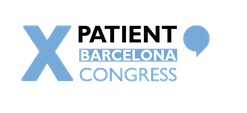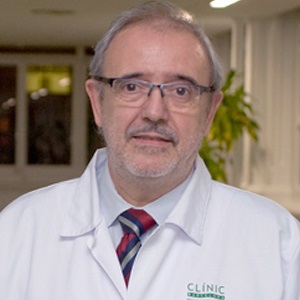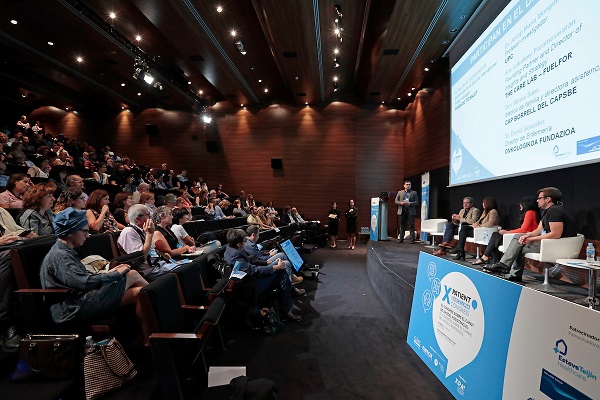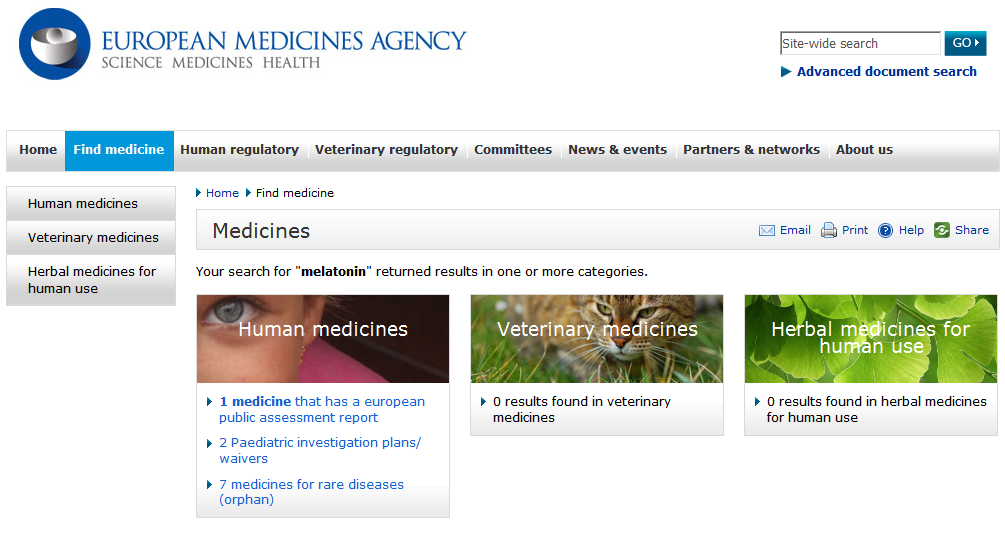
Today we interview Mireia Espallargues, Doctorate in Medicine and specialised in Preventive Medicine and Public Health.
We would like you to tell us a little about the latest news related to the assessment of health technologies given that a lot has been said in 2018 about a proposal for European regulation regarding this.
In fact, on October 1, this proposal for regulating HTAs was debated in the European Parliament following the usual procedure which in this case included the European Council and the European Commission‘s Committee for Environment and Health, as well as other committees which also gave their opinion; and a vote was taken very recently.
Before getting into the subject, the big question is; what is health technology assessment?
It is not a question that I can answer with any kind of rigour in a few lines. Basically, it has to do with assessing different types of health technologies in a systematic way using a multidisciplinary approach.
Talking about “health technologies”, at present we have very different ones: starting with drugs, medical equipment or devices, surgical procedures, diagnostic tests, health products, and even models of care and organisation, or technologies based on ICTs such as Apps and portable devices – ‘wearables’ – and I am leaving out some ….
What is their purpose?
This is precisely the crux of the matter: it is about finding the way to use all this knowledge for taking the best possible decisions about their use or application in health policies, in management, in clinical practice and by people themselves.
To give some background, HTA is the English acronym used to refer to Health Technology Assessment and in the beginning it was a more restrictive concept than it is today because it centred on large equipment and in general, “hospital-based” technologies so to speak. Later, over time, the HTA concept has broadened in response to present day needs and this includes chronic care and mHealth, to give two very different but very current examples.
It is about knowledge in constant evolution. In fact, the assessment of health technologies and the organisms or agencies which do it, such as the AQuAS, have evolved. They have done so using knowledge to respond to the challenges in assessing new technologies, innovations and needs at any given time. In our context we could talk about ageing and chronicity, variations in clinical practice, transparency and accountability, the availability of data – big data and real world data – and its analysis.
It seems complicated. When your children ask you about where you work, how do you explain it?
I tell them that we investigate whether new treatments or those that are already being applied serve a purpose, whether it is worth spending money to improve health (or not so much), and whether there are different options available and also to know which one might be the best.
But it seems that all this may be very far removed from what a person might find in their everyday lives. Can you give me a practical example?
All assessment projects are practical examples. There is always a need for knowledge about a health situation or a disease, certain options (of treatment or interventions to be done, for example in prevention or in the design of programmes for care in chronicity) and there are always aspects to bear in mind: What are the benefits for the patients, what are the risks and what are the costs of the best option possible? What is the most recent research available (the latest articles published)? What are the patient’s preferences? Can everyone have access?
Is all this regulated by law?
What is being sought, precisely, is to regulate by law the way in which the European Union should cooperate at a state, country and regional level in this matter; at this stage, in aspects specifically related to new drugs and health products. The regulatory process is still being defined. It started last January when the proposal was made public, drawing from all the collaborative work done previously at a European level between health technology assessment agencies/bodies and following an extensive public consultation to gather the different views.
What can you tell us about this HTA regulatory proposal?
I think it is important to point out that it is precisely that, a proposal still under discussion where agreement will need to be reached between the two co-legislators (the European Parliament and Council) so it can be adopted in 2019 after which a three-year period will begin to start applying it, and then there will be another three-year period of transition for member states to begin participating. It is very much a current topic and we have no choice but to move forward despite its complexity but we must still wait a little before assessing how it is all going, especially to clarify doubts and dissipate any qualms that it might be generating.
What aspects would you highlight?
Firstly, I would highlight that in general terms, I think it is a good proposal, debatable and which can be fine-tuned in some aspects but it has been ambitious in seeking the maximum rather than the minimum (reflecting the results of the public consultation) and, for the first time in the European Union, laying the foundations to regulate this cooperation which has clearly been a need for some time.
I think it is a proposal that seeks to promote the use of common procedures and methodologies in health technology assessment and to ensure its quality; to promote collaborative assessment between European countries, avoiding duplicities and inconsistencies and guaranteeing the efficient use of resources; to promote the design of a common agenda for assessment and to improve business predictability. In short, more and better health technology assessment, not duplicated, and the same for everyone.
However, the proposal has also generated controversy and criticism for not being very clear in certain aspects especially that referring to the obligation of using reports of health technology assessment which are drawn up jointly. While this obligation may have been interpreted as an infringement of competences, it is also true that the obligation makes reference to using health technology assessment reports which have been drawn up jointly in each of the countries when necessary so as to avoid duplicating work already done.
What implications are at stake?
In Spain, there is experience in networking within the framework of RedETS and at a European level the EunetHTA network has the challenge of moving forward together despite the fact that some countries do not participate yet or have only recently joined.
When we talk of a joint – and unique – report of assessment (or joint clinical assessment) we are talking about assessing the efficacy/effectiveness and safety of a particular technology compared to its possible alternatives (other treatments for the same thing), using tools for comparison and variables in result which are agreed upon between assessment agencies at the design stage of a project (the protocol), including the target population and other methodological aspects. All this, based on the scientific evidence available.
It would then be the responsibility of each country to contextualise or adapt this assessment to each health system based on the evaluation of impact on other aspects or dimensions that will depend a lot on the situation and resources of each environment. This could be things like budgetary efficiency and impact, organisational impact, or ethical, social and legal aspects. This would lead to the capacity of formulating some recommendations for taking decisions at different levels (appraisal). But this original spirit of the proposal does not seem to have been very well explained or remains unclear and some states have expressed their disagreement.
Other relevant actors in this field, such as the pharmaceutical industry or manufacturers of health products, have a slightly different point of view. The pharma-industry has a generally positive opinion and believes that steps in the right direction are being taken although they feel that the industry’s participation in the process may be weakened and also feel that certain aspects of its implementation need to be discussed. The other industry directly affected is that of health products which, even though it shares the objectives of the new regulation, it sees the proposal as being very ambitious and difficult to apply and very much thought of for drug assessment and not so much for the other technologies that are markedly different (in how they are introduced on the market, how they are assessed, etc…). In addition, it comes at a time when the regulations for health products have just been updated and it will be a matter of seeing how much both sets of regulations align with each other.
Would you be willing to state your position with regards the aims of the proposal?
It must be said that this method of working jointly is not all plain sailing. This is why I think the structure of the governance bodies needs to be very clearly defined and there must be a guarantee of participation by all regional and national agencies without a discrimination of influence, both in production and also in the representative bodies as well as in funding.
The proposal for new regulation only makes reference to the assessment done in evaluating the possible introduction of technologies (including emerging technologies). I think it would be advisable to widen the field of action to assessments whose aim is to increase an appropriate usage or to give support in taking decisions to divest in inappropriate technologies.
Another subject that I consider relevant is that even though the spirit of the regulation constantly makes reference to transparency, the guarantees to avoid conflicts of interest are not sufficiently specified.
I think it will be necessary to have a common plan of assessment requiring intense coordination. I see the importance of moving forward in consolidating a structure of coordination so that a permanent activity is guaranteed, and also that participating states take reports into consideration. It will not be easy to go from a voluntary collaboration (at present within the EunetHTA network) to a mandatory one with 28 member states and their diverse regions which might have competences in health transferred, but possible it is. At this stage, less needs to be done to bring the discussion of the proposal to a close and to improve those aspects which lack clarity or are controversial.




















 “One of the greatest challenges of measures is that ‘inputs’ are often measured – the number of people that participate, the number of groups that have been called or who have been talked to or the number of studies in which patients participate. It is about carrying out actions that add value, that help provide knowledge for solutions for patients”
“One of the greatest challenges of measures is that ‘inputs’ are often measured – the number of people that participate, the number of groups that have been called or who have been talked to or the number of studies in which patients participate. It is about carrying out actions that add value, that help provide knowledge for solutions for patients”



